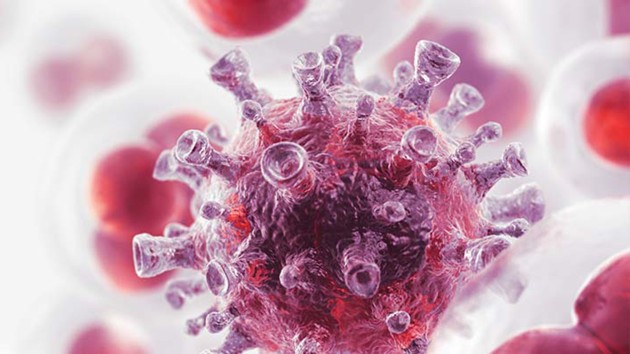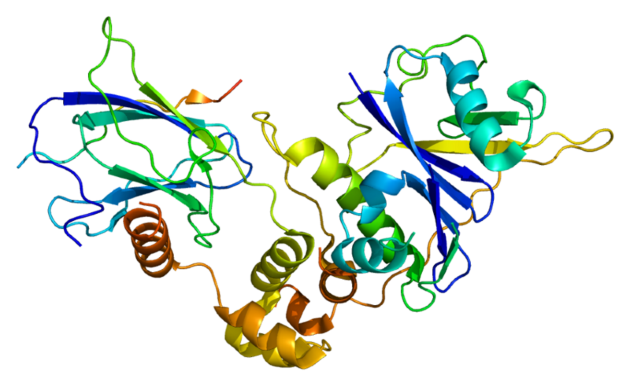Collections
Filters
-
Collection Type
-
-
Supplement |
 Selected Abstracts from the 2019 NCRI Cancer Conference of National Cancer Research Institute
Selected Abstracts from the 2019 NCRI Cancer Conference of National Cancer Research Institute
Organised by the National Cancer Research Institute, which is a partnership of 19 cancer research funders, the NCRI Cancer Conference provides a platform for researchers, clinicians, people affected by cancer and industry representatives to come together to discuss, present and showcase high-quality research.
Image: BlackJack3D / iStock-956809720 -
Focus |
 Tumour Microenvironment
Tumour Microenvironment
In this collection of papers, we highlight five aspects of the tumour microenvironment.
Image: JUAN GAERTNER/SCIENCE PHOTO LIBRARY; KATERYNA KON/SCIENCE PHOTO LIBRARY -
Focus |
 Systemic Inflammation as a Prognostic Marker
Systemic Inflammation as a Prognostic Marker
This collection of papers illustrates how a simple indicator of systemic inflammation based on neutrophilia and/or lymphocytopenia can provide prognostic information in a wide range of cancer types.
Image: JUAN GAERTNER/SCIENCE PHOTO LIBRARY; KATERYNA KON/SCIENCE PHOTO LIBRARY -
Focus |
 Proton Beam Therapy
Proton Beam Therapy
Radiotherapy is a key treatment modality in the clinical management of cancer. Advances in recent years have broadened the tool kit available to oncologists, including the development of proton beam therapy. With several proton beam centres opening globally, this high energy radiotherapy treatment is becoming increasingly accessible. Despite this, several questions remain around how to optimise delivery and support best clinical practice. This collection of articles explores some of the questions surrounding proton beam therapy and discusses recent advances in the delivery of radiotherapy.
-
Collection |
 BMI, Obesity and Cancer Risk
BMI, Obesity and Cancer Risk
Increasing Body Mass Index (BMI) is a growing problem from several perspectives. Although it is well known that tobacco smoking greatly increases cancer risk, today, a higher proportion of the global population is affected by increased BMI, and a developing body of evidence now supports the role played by BMI in the risk of a large number of different cancers.
-
Special |
 Immunotherapy
Immunotherapy
This Special Edition on Immunotherapy contains a selection of articles, commissioned content and videos that provide valuable insight into immunotherapy design, stratification and toxicity management.
Image: DNA Illustrations/Science Source -
Supplement |
 Selected Abstracts from the 2018 NCRI Cancer Conference of National Cancer Research Institute
Selected Abstracts from the 2018 NCRI Cancer Conference of National Cancer Research Institute
Organised by the National Cancer Research Institute, which is a partnership of 19 cancer research funders, the NCRI Cancer Conference provides a platform for researchers, clinicians, people affected by cancer and industry representatives to come together to discuss, present and showcase high-quality research.
-
Collection |
 Editor’s Pick Collection
Editor’s Pick Collection
The British Journal of Cancer publishes articles on a wide range of cancer research, including basic biology of therapeutic relevance, translational research, early- and late-phase trials, epidemiology, and precision medicine. Updated each month, our Editor's Pick showcases a curated selection of those articles which are stimulating the most interest via electronic communication and other methods. This Collection reflects the diversity, quality and relevance of the articles published in BJC. We hope you enjoy reading this Collection, and we welcome your correspondence on these studies.
Image: JUAN GAERTNER/SCIENCE PHOTO LIBRARY; KATERYNA KON/SCIENCE PHOTO LIBRARY -
Collection |
 Colorectal Carcinoma: Cancer Genetics
Colorectal Carcinoma: Cancer Genetics
Colorectal carcinoma (CRC) is a leading global cause of cancer death. Efforts to understand the drivers of CRC have uncovered several genetic determinants, but further work is needed to further elucidate its genetic aetiology, and to identify high risk individuals. Four new studies, supported by the European Cooperation in Science and Technology (COST) framework, are presented in this dedicated Collection on CRC cancer genetics. In the accompanying editorial, Luis Carvajal-Carmona (UC Davis, California) assesses their impact, and highlights the need for collaborative international research efforts to answer complex clinical questions.
Image: JUAN GAERTNER/SCIENCE PHOTO LIBRARY; KATERYNA KON/SCIENCE PHOTO LIBRARY -
Collection |
 Cellular and Molecular Biology
Cellular and Molecular Biology
To mark the launch of our new Cellular and Molecular Biology section in the British Journal of Cancer, we present a series of articles to highlight our best research and reviews in this area.
Image: Colin Goding (Ludwig Institute for Cancer Research, University of Oxford) -
Supplement |
PARP Inhibitors in Ovarian Cancer
In this supplement, the authors comprehensively review molecular and clinical evidence underlying the evolution of poly (ADP-ribose) polymerase (PARP) inhibitors in a journey spanning 50 years, which culminates in the recent licensing approval of the first oral PARP inhibitor, olaparib (Lynparzat™), for BRCA-mutated high-grade serous ovarian cancer.

 2019 Nobel Prize in Physiology or Medicine: Celebrating the Winners
2019 Nobel Prize in Physiology or Medicine: Celebrating the Winners